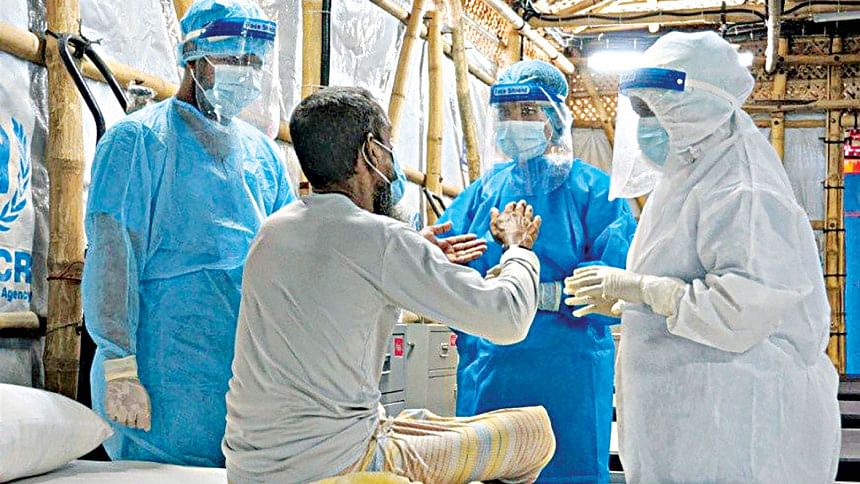How to secure jobs amid looming automation

On December 19, The Daily Star published a refreshing story that offered a window into the changing landscape of our job market. Electronics manufacturers, according to the report, are scrambling for graduates from the polytechnic institutes, often recruiting them straight from the campus. It appears that those graduates are not looking for jobs; jobs are finding them instead.
In a different case, Luna, a junior nurse, administers injections for my mother. She qualified as a nurse a few years ago but is already in two separate jobs. "No one wants to let me go," Luna chuckles, in response to my question about her profession.
These are two random cases where there simply aren't enough graduates to meet the demand of the job market. Unfortunately, Bangladesh's overall employment situation is not as encouraging.
For example, a December 2019 study by the Bangladesh Institute of Development Studies (BIDS) paints a bleak picture of employment, with the average rates of full-time employment and unemployment being at 43 percent and 33 percent, respectively. That means, among other things, that the skills of most of the job-seekers are not aligned with industry demands. Should Bangladesh's educated youth continue being underemployed or unemployed? Or should they learn necessary skills to cater to the country's current and future industrial and social needs?
In its "The Future of Jobs" report (October 2020), the World Economic Forum (WEF) predicts that by 2025 the Fourth Industrial Revolution with its automation boom will replace 85 million jobs worldwide. It will also create 97 million new tech-oriented jobs. The report lists ten professions that will diminish, including that of data entry clerks and factory workers. It mentions another ten sectors that will create new positions (e.g. data scientists and process automation specialists). The WEF forecasts that only the tech-related jobs will remain relevant while manual work will gradually go to automation. But it reassures us that the 4IR will create more jobs than it will eliminate, as did the previous industrial revolutions.
Such a simplistic view of the future may not apply everywhere. Countries differ in socio-economic conditions, state of industrialisation, population structure, and skill level, among other things. Besides, it is not only factory workers or data entry clerks who may become redundant because of automation. Any predictable intellectual work is also susceptible to automation because software can perform it. Many stable earning jobs such as those of copywriters, journalists or medical image analysts are vulnerable, too. Software will make such jobs so easy that a low-wage worker with some training can accomplish them. Manual work is at lower risk of automation as it requires operating an expensive robot, as opposed to software. Even if robots take over much of the manual work, that will create new demands for robot technicians with hands-on skills. That's good news for the polytechnic graduates with technical backgrounds; their skills will remain relevant and further possibilities may open up.
Here is one example. Trained operators somewhere in the USA can fly drones in Afghanistan, Syria, or Libya to carry out surveillance activities. Similarly, technicians can also operate and repair machines anywhere in the world, provided they have the required skills and dexterity—and that too at a fraction of the cost.
Meanwhile, Luna and others like her will continue to receive more job offers. Why? The World Health Organization (WHO) reports, as per 2011 estimates, that there are about 3.05 physicians and 1.07 nurses per 10,000 people in Bangladesh. The situation has worsened over the subsequent decade which the Covid-19 pandemic has exposed. Bangladesh has only 24 percent of the nurses it needs, according to Bangladesh Nursing and Midwifery Council (BNMC). No wonder many nurses have two jobs.
The global scenario in the nursing profession is not much different either. A study by the British Centre for Health and Social Care Research estimates that shortage of nurses will stand at 7 million globally by 2030. There aren't enough new nurses to fill up the vacancies created by retiring ones. Higher life expectancy has resulted in an increasing number of adult populations requiring more nurses. The USA will need 175,900 new nurses each year until 2029. For the UK, the nursing crisis has severely affected its ability to fight the Covid-19 situation. In Australia, a federal government agency predicts a shortfall of 85,000 nurses by 2025 and 123,000 by 2030. Automation is unlikely to be of any help to these developed countries.
Robots are still a long way from offering the empathy, care, and dexterity that the profession requires. Human nurses will remain in high demand for many more years. Only they have the skills to solve problems in unpredictable environments that nurses often face. Populous countries such as Bangladesh can benefit from such a situation.
Bangladesh must look at its own needs and the global market demands. The automation trend will increase in every sector, more or less. The country will require an adequately trained workforce that only relevant technical training can produce. It will also need many more nurses to deliver quality healthcare services that are also essential for sustained economic growth. Bangladesh will not have to send unskilled workers to foreign lands or sell low-tech products anymore. Instead, it can offer higher-value skill, knowledge, and care to the world.
Dr Sayeed Ahmed is a consulting engineer and the CEO of Bayside Analytix, a technology-focused strategy and management consulting organisation.

 For all latest news, follow The Daily Star's Google News channel.
For all latest news, follow The Daily Star's Google News channel. 



Comments